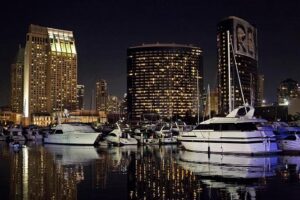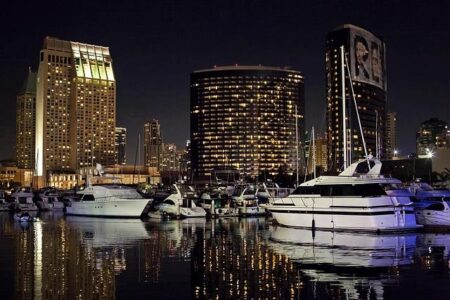SeaWorld San Diego has officially ended its world-renowned killer whale show, marking the close of an era for one of its most iconic attractions. The announcement, reported by France 24, underscores shifting public attitudes toward marine mammal performances and reflects growing concerns over animal welfare. This decision signals a significant change in SeaWorld’s approach to marine entertainment and conservation efforts.
SeaWorld San DiegoŌĆÖs Decision Marks End of an Era in Marine Entertainment
After nearly five decades, the iconic killer whale performances at SeaWorld San Diego have come to a close, signaling a monumental shift in marine entertainment. The decision reflects growing public concern over the ethical treatment of orcas, combined with evolving societal values that prioritize conservation and animal welfare. With crowds once flocking to witness the synchronized leaps and powerful displays of these majestic creatures, SeaWorldŌĆÖs new direction focuses exclusively on education and rehabilitation efforts, rather than spectacle.
The move has generated widespread reactions from fans, activists, and industry experts alike. Key elements of this transition include:
- End of theatrical shows: Orca performances will no longer feature in San Diego’s exhibits.
- Enhanced animal care: Increased investment in the health and well-being of existing marine mammals.
- Educational programming: Interactive experiences designed to promote ocean conservation.
- Rehabilitative focus: Facilities will prioritize rescued marine life rehabilitation and potential release when possible.
This paradigm shift underscores a broader trend in amusement parks and aquariums worldwide, blending entertainment with ecological responsibility.
| Year | Orca Shows Start | Orca Shows End | Focus Shift |
|---|---|---|---|
| 1965 | First orca show debut | – | – |
| 2016 | – | Announcement to phase out breeding | Conservation |
| 2023 | – | Final orca show performed | Education & Rehabilitation |
Animal Welfare Concerns Drive Shift Away from Killer Whale Shows
Growing public awareness and criticism of orca captivity have led to a seismic change in how marine parks operate globally. SeaWorld San DiegoŌĆÖs decision to end its iconic killer whale shows reflects a broader industry shift prioritizing animal welfare over entertainment. Advocates argue that the traditional performances, which often require the whales to perform unnatural behaviors, do not align with modern ethics regarding marine life treatment.
Critics highlight issues such as:
- Mental and physical stress experienced by captive orcas due to confinement and repetitive shows
- Shortened life spans compared to wild counterparts
- Social disruption caused by separating whales from their pods
In response, SeaWorld has committed to transforming its parks with new, education-focused exhibits aimed at promoting conservation and natural behaviors. This pivot represents a cultural turning point within marine entertainment, showcasing a commitment to ethical practices in the treatment of marine mammals.
| Key Concern | Impact on Orcas | Park Response |
|---|---|---|
| Captivity Stress | Elevated cortisol levels | End of live shows |
| Social Isolation | Altered social dynamics | Focus on naturalistic habitats |
| Lifespan Reduction | Shorter survival rates | Investment in rescue and rehabilitation |
Economic and Cultural Impact on Local Tourism Explored
SeaWorld San Diego’s decision to retire its iconic killer whale show has reverberated beyond the parkŌĆÖs gates, striking a chord within the local economy. The show was a magnet for tourists, drawing thousands annually, which fueled revenue not only for the park but also for surrounding businesses such as hotels, restaurants, and retail outlets. The transition presents both challenges and opportunities: while some local vendors may experience a downturn in foot traffic, there is a burgeoning interest in more sustainable and educational marine experiences, potentially attracting a new demographic of visitors. Experts anticipate an economic reshaping, as the tourism sector pivots towards eco-friendly attractions.
The cultural landscape of San Diego is similarly evolving with this shift. Long regarded as a symbol of the cityŌĆÖs coastal connection, the killer whale show held nostalgic and educational value for generations. The move signals a broader cultural shift towards wildlife conservation and animal welfare, aligning with global trends and raising awareness about marine life protection. Local cultural institutions have responded by enhancing marine conservation exhibits and programs, aiming to sustain San DiegoŌĆÖs reputation as a hub for marine education and responsible tourism. Below is a snapshot of anticipated impacts:
| Impact Area | Positive Effects | Challenges |
|---|---|---|
| Tourism Revenue | Growth in eco-tourism demand | Reduced traditional visitor numbers |
| Local Businesses | New business opportunities in education and conservation | Temporary decline in visitor spending |
| Cultural Identity | Increased community engagement in wildlife protection | Loss of a longstanding cultural icon |
- Economic diversification encouraged by shifts in visitor interests
- Stronger emphasis on animal welfare reshaping tourism narratives
- Enhanced collaboration between SeaWorld and local cultural groups
Recommendations for Future Marine Conservation and Education Initiatives
As institutions worldwide reconsider their engagement with marine wildlife, it is crucial to pivot towards initiatives that prioritize sustainable marine conservation and public education. Future programs should embrace immersive, technology-driven experiences such as virtual reality and interactive exhibits, which allow visitors to learn about marine ecosystems without causing harm to animals. Furthermore, partnerships with scientific organizations can enhance the credibility and impact of educational efforts, ensuring that messaging is grounded in the latest research while promoting active participation in ocean preservation.
To maximize impact, conservation initiatives must focus on community inclusion and awareness. Recommended strategies include:
- Developing local stewardship programs that empower coastal communities as frontline protectors of marine habitats.
- Implementing school outreach curricula that integrate marine science with environmental ethics from an early age.
- Hosting citizen science projects that engage the public in real-time data collection and monitoring efforts.
- Investing in restoration technologies such as coral gardening and habitat rehabilitation to actively reverse ecosystem degradation.
| Initiative | Focus Area | Expected Outcome |
|---|---|---|
| Virtual Marine Exhibits | Public Education | Increased awareness, reduced animal captivity |
| Community Stewardship Programs | Conservation Efforts | Sustainable local management |
| School Outreach & Curricula | Education | Long-term cultural shift toward ocean care |
| Citizen Science Engagement | Research & Monitoring | Enhanced data collection for policy influence |
In Conclusion
SeaWorld San DiegoŌĆÖs decision to end its world-famous killer whale show marks a significant shift in the theme park industryŌĆÖs approach to marine life entertainment. This move reflects growing public awareness and concern over the ethics of keeping orcas in captivity. As SeaWorld transitions toward more educational and conservation-focused exhibits, the future of marine animal attractions appears set to prioritize welfare and sustainability. The end of the killer whale show signals a new chapter not only for SeaWorld but also for the broader conversation about human interaction with wild animals.







